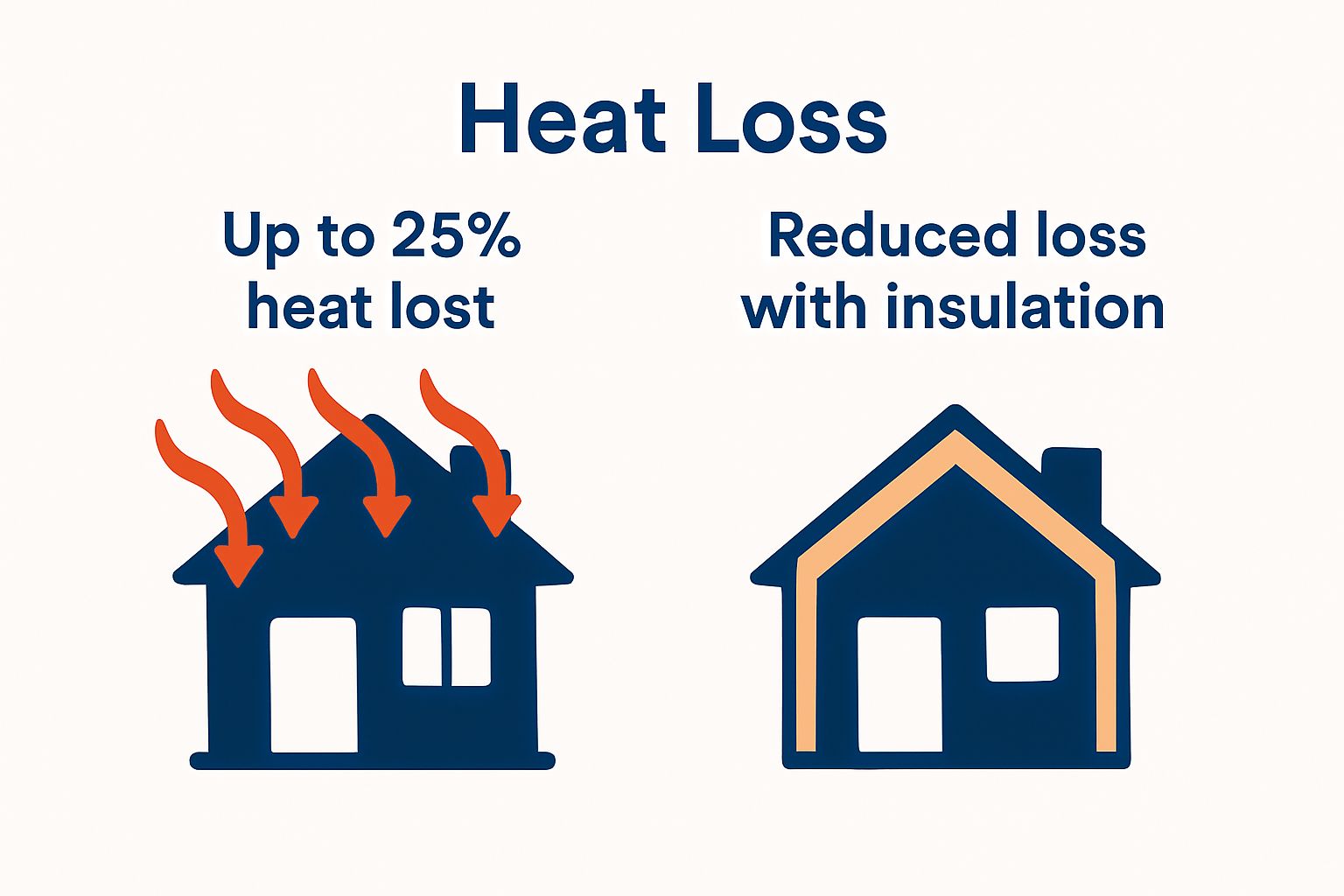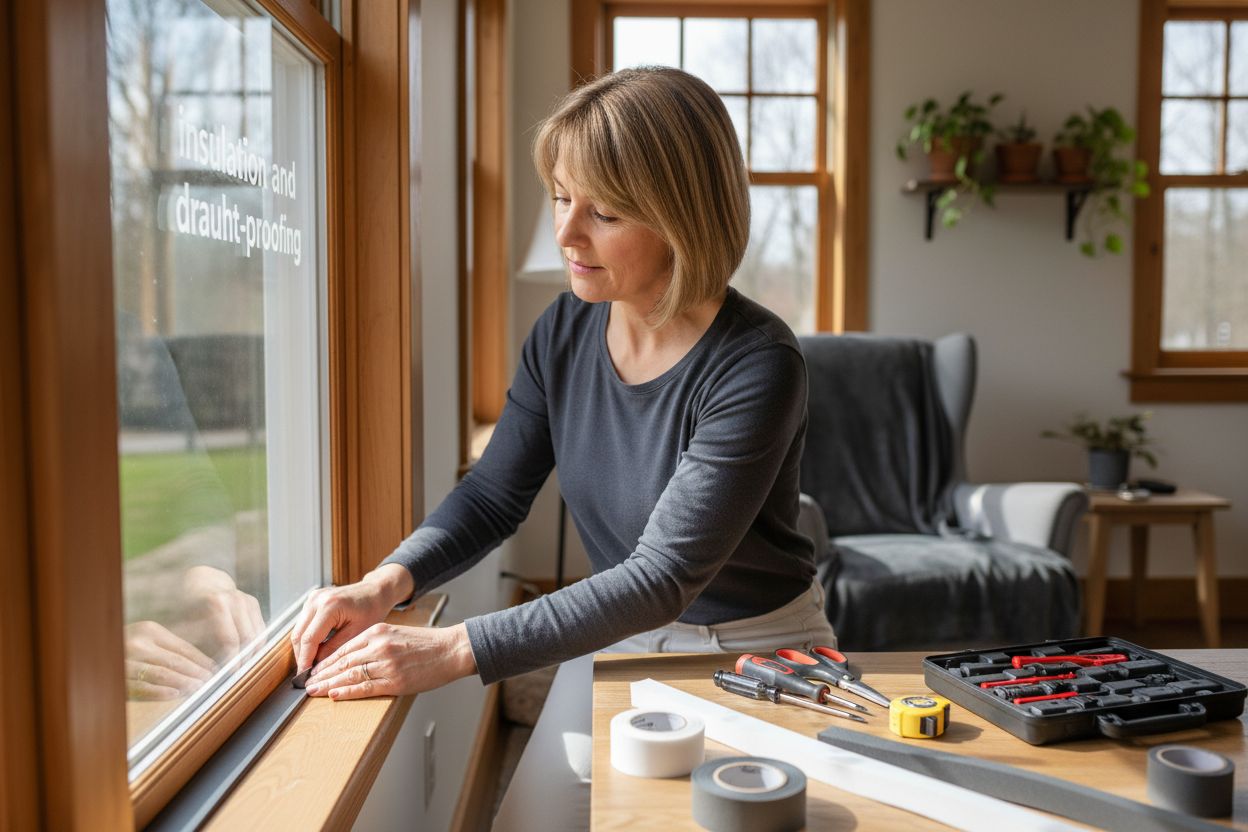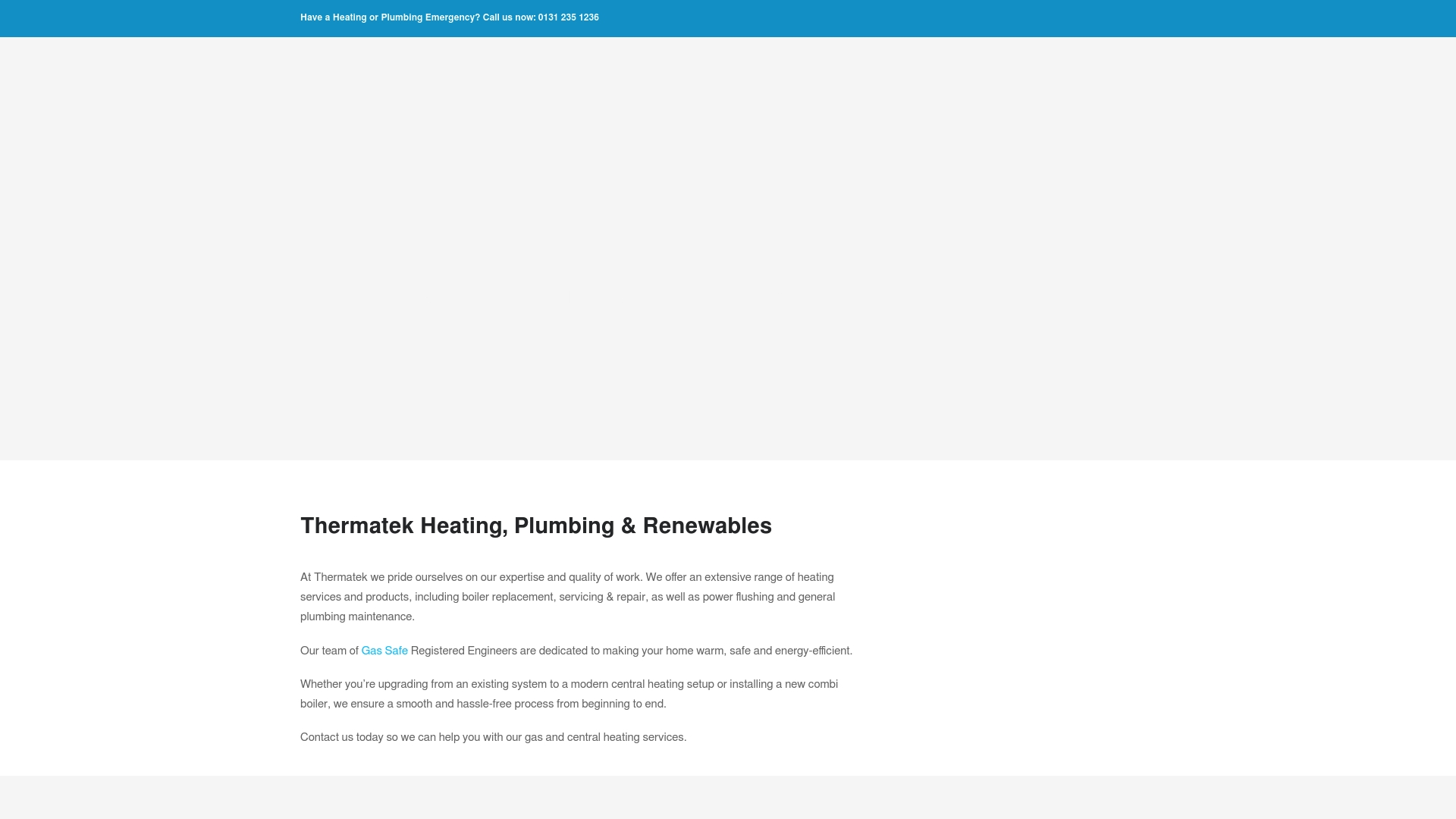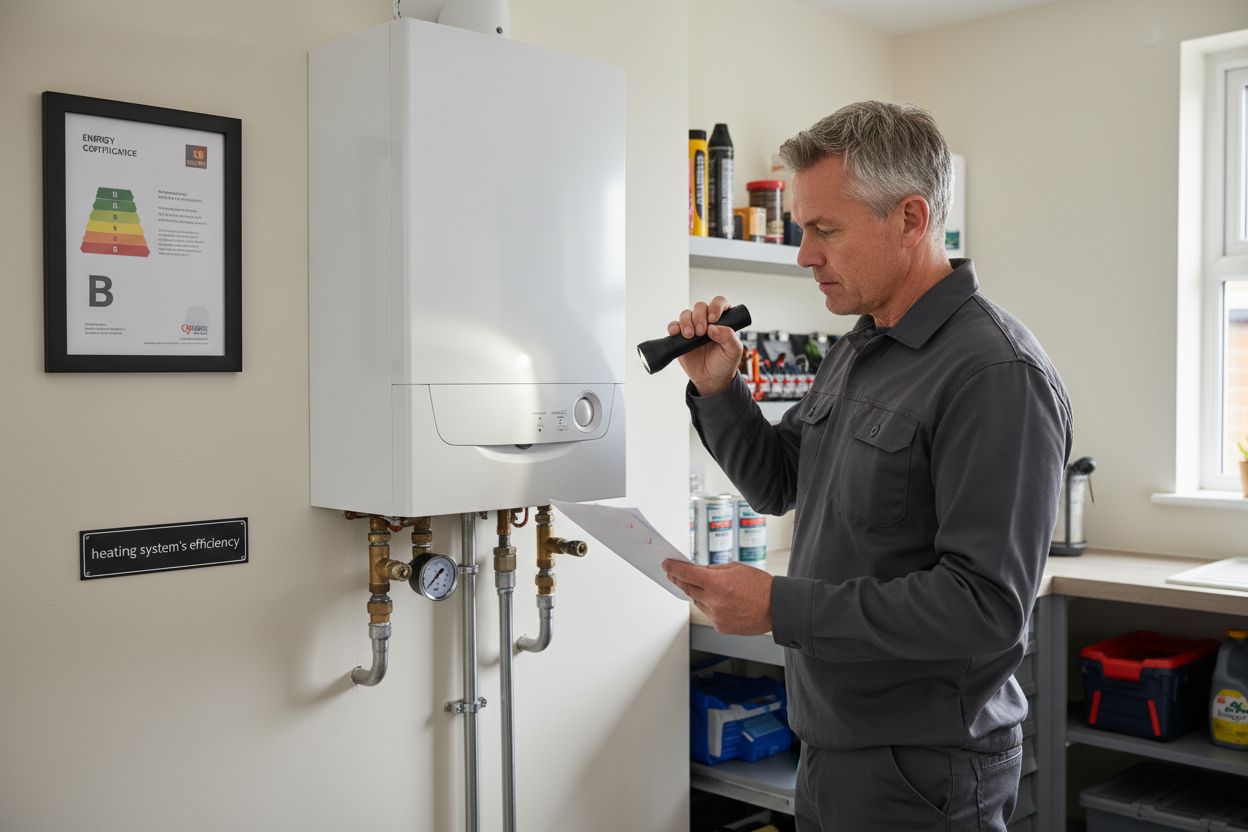How to Use Heating Efficiently for Comfort and Savings
Heating your home can quietly drain your wallet, especially with inefficient systems hiding in plain sight. Oddly enough, older heating setups can run at much lower efficiency levels compared to modern alternatives, meaning lots of the energy you pay for disappears into thin air. Yet the biggest surprise is that the key to saving money and staying warm is often something as simple as a careful inspection before you touch the thermostat or invest in new tech.
Table of Contents
- Step 1: Assess Your Current Heating System’s Efficiency
- Step 2: Identify Areas For Insulation And Draught-Proofing
- Step 3: Set Your Thermostat For Optimal Comfort
- Step 4: Schedule Regular Maintenance Checks For Your Heating System
- Step 5: Invest In Smart Heating Technology And Renewable Solutions
Quick Summary
| Key Point | Explanation |
|---|---|
| 1. Assess heating system efficiency | Conduct thorough inspections and obtain an Energy Performance Certificate to identify inefficiencies. |
| 2. Implement insulation and draught-proofing | Focus on areas like lofts and windows to prevent heat loss and improve heating efficiency. |
| 3. Optimise thermostat settings | Program thermostats for lower temperatures during sleeping or when away to reduce energy usage. |
| 4. Schedule regular maintenance | Annual professional servicing extends heating system lifespan and ensures optimal performance. |
| 5. Invest in smart and renewable technologies | Explore advanced heating systems and renewable options for improved control and energy savings. |
Step 1: Assess your current heating system’s efficiency
Understanding your current heating system’s efficiency is the critical first step towards optimising home energy consumption and reducing utility expenses. Before implementing any improvements, you need a comprehensive snapshot of your existing heating infrastructure and its performance characteristics.
Start by conducting a thorough visual inspection of your heating system, focusing on key components like your boiler, radiators, and thermostat. Look for signs of wear, rust, or outdated technology that might indicate inefficient performance. Older heating systems typically operate at significantly lower efficiency levels, potentially wasting substantial energy and increasing monthly heating costs.
A critical tool in this assessment is the Energy Performance Certificate, which provides a detailed evaluation of your property’s energy efficiency. This document offers insights into your current system’s performance, potential heat loss areas, and recommended upgrades. Obtaining this certificate will give you an objective baseline for understanding your heating system’s current state.
Diagnostic Tools and Professional Assessment
While homeowners can perform initial inspections, professional assessment offers more nuanced insights. Consider scheduling a comprehensive heating system evaluation with qualified engineers who can use specialized diagnostic equipment to measure system performance. These professionals can identify hidden inefficiencies, potential heat loss points, and recommend targeted improvements.
Key diagnostic measurements typically include:
- Boiler efficiency percentage
- Heat distribution consistency
- Insulation quality
- Temperature regulation accuracy
Additionally, check out our guide on understanding energy efficient heating for more detailed insights into optimising your home’s thermal performance. Professional assessments can reveal opportunities for strategic upgrades that might not be immediately apparent during a basic inspection.
Verification of a successful assessment involves documenting current system performance, identifying specific inefficiency areas, and developing a clear improvement roadmap. By thoroughly understanding your existing heating infrastructure, you’ll be well-positioned to make informed decisions about potential upgrades and energy-saving strategies in subsequent steps of your heating efficiency journey.
Step 2: Identify areas for insulation and draught-proofing
Insulation and draught-proofing are fundamental strategies for maintaining home warmth while dramatically reducing energy consumption. These techniques create a thermal barrier that prevents heat loss, ensuring your heating system works more efficiently and your living spaces remain consistently comfortable.
Begin by conducting a comprehensive home heat loss assessment. Walk through each room systematically, feeling for cold spots near windows, doors, floors, and walls. Pay special attention to areas where different building materials meet, such as window frames, skirting boards, and ceiling corners. These junction points are often significant sources of undetected heat escape.
Targeted Insulation Strategies
Your home loses heat through multiple pathways, with key areas requiring focused attention. Loft spaces are prime candidates for heat retention improvements. Uninsulated lofts can lose approximately 25% of your home’s generated heat, making proper insulation a cost-effective intervention.
 Consider installing mineral wool insulation or solid board systems that create an effective thermal barrier.
Consider installing mineral wool insulation or solid board systems that create an effective thermal barrier.
According to the Energy Saving Trust, comprehensive home insulation can save homeowners substantial amounts on annual heating expenses. Wall insulation represents another critical intervention, particularly for properties with solid or cavity walls. Cavity wall insulation involves filling the gap between external wall layers with thermal materials, dramatically reducing heat transmission.
Draught-proofing requires meticulous attention to potential air leakage points. Inspect window seals, external doors, letterboxes, and electrical fittings for small gaps that permit cold air infiltration. Professional-grade draught-exclusion products can seal these openings effectively:

- Self-adhesive foam strips for window and door frames
- Brush or rubber door seals
Verification involves monitoring your home’s thermal performance after implementing these strategies. A consistent indoor temperature with reduced heating system workload indicates successful insulation and draught-proofing. Consider using a thermal imaging camera or engaging a professional energy assessor to identify any remaining heat loss points, ensuring your efforts deliver maximum efficiency.
Remember that effective insulation is an investment. While initial costs might seem significant, the long-term energy savings and improved home comfort make this step crucial in your heating efficiency journey.
Below is a checklist to help you verify the effectiveness of insulation and draught-proofing efforts, ensuring your home maximises its heating efficiency.
| Checkpoint | Description | How to Verify |
|---|---|---|
| Temperature Consistency | Indoor temperature remains steady with less fluctuation | Monitor with a household thermometer |
| Reduced Heating Usage | Heating system runs less frequently to maintain comfort | Observe boiler or heating system cycles |
| Sealed Draughts | No noticeable cold air entering around windows or doors | Feel for draughts with your hand |
| Effective Loft Insulation | Loft area feels warmer, minimal heat escaping upwards | Inspect loft temperature and insulation |
| Walls Properly Insulated | Less cold coming from external walls | Compare internal wall surface temperatures |
| No Gaps in Doors/Frames | No visible light or gaps when doors and windows are closed | Visual inspection around frames and letterboxes |
| Lower Energy Bills | Heating-related energy usage decreases | Compare recent energy bills to previous winters |
Step 3: Set your thermostat for optimal comfort
Thermostat management is a crucial strategy for balancing home comfort with energy efficiency. Precise temperature control can significantly reduce energy consumption while maintaining a pleasant living environment. Modern heating systems offer sophisticated programming options that allow homeowners to create tailored temperature schedules matching their daily routines.
Start by understanding your home’s thermal characteristics and your personal comfort preferences. Most households find that 20-21 degrees Celsius represents an ideal daytime temperature for comfort and energy efficiency.
During nighttime or when the property is unoccupied, reducing temperature by 2-3 degrees can generate substantial energy savings without compromising overall warmth.
Smart Programming and Temperature Management
Programmable and smart thermostats revolutionise heating control by allowing granular temperature adjustments. These devices enable you to create multiple temperature zones throughout your home, ensuring different areas maintain appropriate warmth levels. For instance, living areas might require consistent warmth, while bedrooms can tolerate slightly lower temperatures during sleeping hours.
Learn more about understanding the best temperature for heating your home to refine your approach. Consider implementing a strategic heating schedule that aligns with your household’s daily activities. Program lower temperatures during work hours or overnight, and schedule gentle warming before family members return or wake up.
Key thermostat programming principles include:
- Setting lower temperatures when sleeping or away
- Creating gradual temperature transitions
- Avoiding extreme temperature fluctuations
Verification of successful thermostat management involves monitoring your energy bills and assessing personal comfort levels. A well-configured system should provide consistent warmth while demonstrating measurable reductions in energy consumption. Pay attention to how your body responds to temperature changes and be prepared to make incremental adjustments.
Remember that effective thermostat management is about finding a personalised balance between comfort and efficiency. Experiment with different settings, observe their impact, and don’t hesitate to make subtle modifications to suit your specific lifestyle and home environment.
Step 4: Schedule regular maintenance checks for your heating system
Regular maintenance is the cornerstone of a reliable, efficient heating system. Preventative care can significantly extend your heating infrastructure’s lifespan, reduce unexpected breakdowns, and maintain optimal energy performance. Professional maintenance checks serve as a comprehensive health assessment for your home’s thermal ecosystem.
Heating systems, like any complex machinery, require periodic professional evaluation. Annual servicing represents a critical investment in your home’s comfort and long-term energy efficiency. Qualified engineers can identify potential issues before they escalate into costly repairs, ensuring your system operates at peak performance throughout the year.
Professional Inspection and Maintenance Strategies
A thorough heating system maintenance involves more than a cursory glance. Certified technicians conduct detailed diagnostics, examining critical components such as boiler mechanisms, heat exchangers, electrical connections, and overall system calibration. They will clean internal components, check for potential wear and tear, and ensure all safety mechanisms function correctly.
Explore our comprehensive central heating maintenance tips to understand the depth of professional servicing. The inspection process typically includes:
- Checking combustion efficiency
- Examining electrical connections
- Cleaning key system components
- Verifying safety control mechanisms
- Assessing overall system performance
Beyond professional checks, homeowners can perform basic maintenance tasks. Regularly bleeding radiators, checking pressure levels, and keeping system areas clean contribute to overall heating efficiency. Watch for warning signs like unusual noises, inconsistent heating, or unexplained increases in energy consumption, which might indicate underlying system issues.
Verification of successful maintenance involves obtaining a detailed service report from your engineer. This document should outline system performance, any repairs completed, and recommendations for future care. Additionally, track your energy bills following maintenance – a well-serviced system typically demonstrates more consistent and efficient energy consumption.
Remember that maintenance is not just about preventing breakdowns but optimising your heating system’s performance. Consistent, professional care ensures your home remains warm, comfortable, and energy-efficient throughout the year.
Step 5: Invest in smart heating technology and renewable solutions
Transitioning towards smart heating technology and renewable energy solutions represents a transformative approach to home heating efficiency. Modern technological innovations offer unprecedented control, sustainability, and potential long-term cost savings. These advanced systems go beyond traditional heating methods, integrating intelligent monitoring, adaptive programming, and environmentally friendly energy generation.
Smart thermostats stand at the forefront of heating technology, providing granular control and unprecedented insights into energy consumption. These devices learn your household’s heating patterns, automatically adjusting temperature settings to maximise comfort and minimise waste. Machine learning algorithms analyse your specific usage, creating personalised heating schedules that adapt to your lifestyle while reducing unnecessary energy expenditure.
Exploring Renewable Heating Alternatives
Renewable heating technologies like air source heat pumps and solar thermal systems offer sustainable alternatives to conventional fossil fuel-based heating. Air source heat pumps extract thermal energy from external air, converting it into usable heating with remarkable efficiency. These systems can reduce carbon emissions and provide consistent home warmth while consuming significantly less electricity compared to traditional heating methods.
Discover more about sustainable heating systems to understand the broader landscape of renewable energy options. When considering renewable solutions, evaluate factors such as:
- Initial installation costs
- Long-term energy savings potential
- Compatibility with existing home infrastructure
- Environmental impact
- Potential government incentives
Implementing smart technology requires a strategic approach. Begin by conducting a comprehensive home energy assessment to determine the most suitable technological interventions. Professional consultations can help identify specific solutions tailored to your property’s unique characteristics, ensuring optimal performance and maximum return on investment.
Verification of successful smart technology implementation involves monitoring energy consumption patterns, tracking reduction in utility expenses, and assessing overall home comfort levels. Modern systems often provide detailed digital dashboards and smartphone applications, allowing real-time tracking of energy usage and system performance.
Remember that investing in smart heating technology is not just about immediate gains but creating a more sustainable, efficient home environment for the future. Embrace these innovations as a long-term strategy for improved comfort, reduced energy costs, and minimal environmental impact.
Ready to Transform Your Home Heating for Comfort and Savings?
If you are seeking efficient ways to stay warm without rising bills, you are not alone. Many homeowners struggle with outdated systems, lack of insulation, or uncertainty about smart heating choices. Our article has shown how small changes like improved insulation, regular maintenance, and investing in advanced technology can make a substantial difference. If you want peace of mind and lower costs, let trusted professionals turn these strategies into reality for your home.

Take the next step with a partner who understands both comfort and efficiency. At Thermatek Heating, our Gas Safe Registered engineers specialise in tailored solutions from smart thermostat installations to expert boiler servicing, renewable heating like air source heat pumps, and reliable insulation support. Do not let another winter pass with uncertainty. Visit https://thermatekheating.co.uk today for a free quote and experience how local expertise can maximise your home’s warmth and savings. Speak with us now and discover just how much better your heating can work for you.
Frequently Asked Questions
How can I assess the efficiency of my current heating system?
Understanding your heating system’s efficiency involves conducting a visual inspection of key components like the boiler and radiators, checking for signs of wear or rust. Obtaining an Energy Performance Certificate can also provide insights into your system’s performance and areas for improvement.
What are effective strategies for improving insulation and draught-proofing in my home?
Start by identifying cold spots in your home, particularly near windows and doors. Consider insulating loft spaces and cavity walls to reduce heat loss. For draught-proofing, check window seals and use self-adhesive foam strips or door seals to close any gaps that allow cold air in.
How should I set my thermostat for optimal heating efficiency?
Aim for an indoor temperature of 20-21 degrees Celsius during the day. Lower the temperature by 2-3 degrees at night or when the house is unoccupied. Consider using programmable or smart thermostats to create tailored heating schedules that align with your daily routine.
Why is regular maintenance important for my heating system?
Regular maintenance helps extend your heating system’s lifespan, prevents unexpected breakdowns, and ensures optimal energy performance. Annual professional servicing can identify potential issues early, allowing your system to operate efficiently year-round.
Recommended
- Understanding Energy Efficient Heating For Your Home – Thermatek Heating
- Understanding The Best Temperature For Heating Your Home – Thermatek Heating
- Understanding Sustainable Heating Systems Today – Thermatek Heating
- Which Heating System Is Best? Understanding Your Options – Thermatek Heating
- Essential Heating System Maintenance Guide for Homeowners – 8th Bend Plumbing Heating and Cooling
- Winter Saving Tips – Colley Refrigeration

